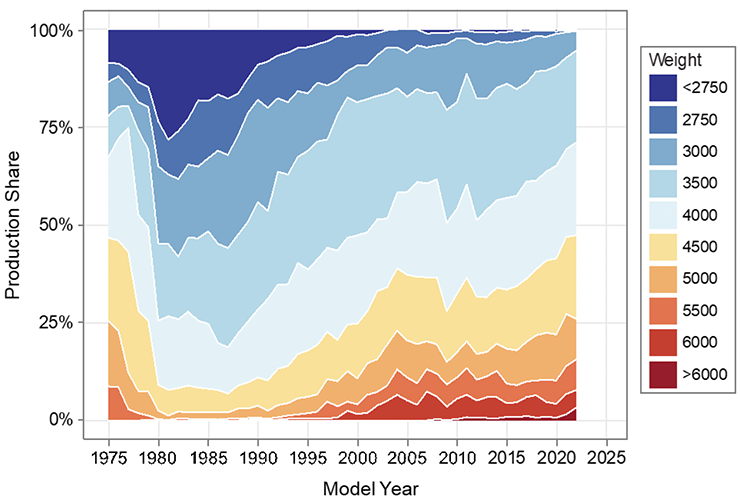If you’ve left your house this spring, you already know about the potholes. After a snowy and volatile winter, pavement condition in the Twin Cities is likely at its worst level since (I’d guess) the 1940s.
When bumping along a city street, it’s easy to get mad at the mayor or public works staff, and plenty of people on social media are doing just that. The truth behind how Minnesota’s roads are built, maintained, and reconstructed is more complicated. Here are four things that Twin Cities’ taxpayers might consider while contemplating how Minnesota asphalt has reached its nadir.
1. The gas tax is absurdly low
When it comes to paying taxes, American drivers are spoiled. We expect great roads, but compared to just about every other country in the Global North, we pay very little for our infrastructure. The gas tax, among the lowest in the developed world, does not even adjust for inflation. It sits at 18.4 cents at the Federal level, and hasn’t been raised since 1993. (Note: It’s slightly higher for Diesel fuel.) During those thirty years, there’s been over 100% inflation, which means that the primary source of freeway funding has lost half its purchasing power.
The state gas tax has proved a bit more responsive to needs, but not much. The Minnesota Legislature hasn’t substantially raised the general gas tax since 2008, and it currently sits at 28.5 cents per gallon. When you contrast the combined 47-cent tax to any other reasonable country, it’s downright parsimonious: Canadians pay $1.40 per gallon, Australiaians pay $1.17, and the Brits are saddled with a $2.82 surcharge. Meanwhile, many continental European countries are even higher.
Despite the predictable decline in highway maintenance dollars, there’s little chance of the gas tax shortfall changing. U.S. politics treat gas taxes like a proverbial “third rail” (an ironic metaphor.) Recall last summer when inflation led President Joe Biden to call for a “gas tax holiday,” (which never actually happened) and the price of gas became the dominant media datapoint to discuss inflation. I doubt many U.S. politicians have the courage to raise their gas tax, despite the urgent need for climate action.
2. Local road funding is inequitable
Unless you’re on a busy road, state and local gas taxes probably don’t directly fund the street in front of your house. Urban road funding is complicated, and “ownership” switches depending on an elaborate jurisdictional hierarchy where busier “arterial” roads are typically funded by the state or county transportation department.
“Municipal state aid” (MSA) roads form the bulk of arterial routes, and have to be designed according to state standards. (For example Saint Paul receives about $15 million per year in MSA money for road maintenance for streets like Grand Avenue.)
On the other hand, local streets in quieter residential neighborhoods are paid for through city property taxes. In general, this isn’t ideal. Property taxes are regressive compared to income taxes, and less fair and direct than user fees like the gas tax. Funding streets with property taxes means that everyone is paying for street maintenance, whether they drive or not. It would be nice if there were a more equitable way to pay for local streets.
3. U.S. vehicles are too heavy
In part because of the low gas tax, Americans automakers have spurred one of the most maddening automotive trends in the world: a striking increase in vehicle size. The average size and weight of cars has increased steadily over the last decade. For example, the average pickup truck weighs 30% more than it did in 1975.

4. Roads-to-people ratios
Finally, there’s the general roads-to-people ratio, a big picture way of thinking about city financing. Because of the lack of density in American cities, the average American pays for many more miles of road than someone in a comparable sized city in Europe or Asia.
There are lots of ways to describe this situation. At the largest scale, Minnesota ranks 13th in miles of freeway per-capita; California, New Jersey, and (of course) Hawaii are have the fewest freeway miles. From a capital investment perspective, each of those freeways are an expensive liability that state taxpayers need to maintain. For example, fixing just one complex freeway interchange in Duluth costs over half a billion dollars.
At the local level too, the roads-to-people ratio matters. A city like Duluth, which has seen population decline over the last half-century, confronts problems around how to pay for infrastructure with a limited tax base. The present-day 86,000 taxpayers of Duluth pay to maintain 711 miles of streets that were built for a previous generation of residents. This is why Duluth Mayor Emily Larson recently assured the New York Times that there was plenty of room for more people to live in the Zenith City.
By contrast, St. Paul has 1,800 miles of roads but paying for that cost is divided by 310,000 people, one mile for every 170 people. The more that built-out cities can grow, they more they reduce their road burden, and the better that ratio becomes.
Hot mix, a temporary solution
All this is to say that building and maintaining roads is expensive, and in the big picture, there are better ways to make sure our streets aren’t falling apart. Our country could change transportation funding to make it more direct and equitable, regulate vehicle sizes and weights, or increase density to spread the infrastructure cost burden.
On the other hand, there’s good news: spring temperatures have finally increased to the point where “hot mix” can start filling those potholes. St. Paul’s city-owned asphalt plant on Topping Street will be busy for the next few months, churning out blacktop as fast as public works’ trucks can haul it. Look for hot mix on a street near you, but in the meantime, ponder why our streets are falling apart in the first place.


0 Commentaires